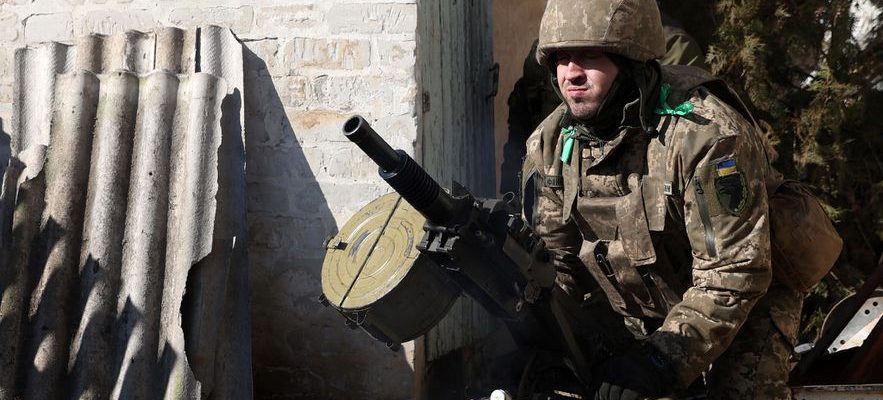After months of fierce fighting, the battle for Bakhmout continues to rage. Dismissing the scenario of a tactical withdrawal in the face of the advance of Russian forces, Volodymyr Zelensky reaffirmed at the start of the week his desire to hold this city in eastern Ukraine, which has become the epicenter of the fighting, to the end. . “I told the general staff to find the appropriate forces to help the guys in Bakhmout,” he said on Monday evening, adding “no part of Ukraine can be left behind. “. For nearly eight months, Ukrainians and Russians have been battling there in a hell of mud, concrete, scrap metal.
“Initially, this city was not particularly strategic, but it ended up acquiring a strong symbolic weight, underlines General Jérôme Pellistrandi, editor-in-chief of the National Defense Review. Giving it up would therefore be difficult politically.”
On the spot, the position of the Ukrainian forces seems increasingly precarious. The Russian paramilitary group Wagner claimed Wednesday March 8 the capture of “the eastern part of Bakhmout”, claiming to hold “everything east of the Bakhmoutka river”, which crosses the city. Russian troops have also conquered ground in recent weeks north and south of the city, limiting supply routes for Ukrainian forces to a few roads running west.
Bakhmut “now constitutes a Ukrainian-held salient, vulnerable to Russian attack from three sides”, the March 4 a report the British Ministry of Defence, pointing to “increasing pressure” on the Ukrainian forces.
Progress paid at a high price
“The main risk for the forces remaining in Bakhmout is encirclement, noted General Olivier de Bavinchove, former chief of staff of the International Forces in Afghanistan (ISAF). But the Ukrainians now believe that it is more interesting to slow down the Russians in this city as much as possible and to inflict them as many losses as possible rather than to stall and recover on a new line of defense a few kilometers away.” And for good reason: over the months, the Russian forces have paid a high price for each advance in the area.
A Ukrainian soldier in position in Bakhmout, March 3, 2022
© / afp.com/Anatolii Stepanov
According to Washington, the Wagner private militia – which concentrates its main efforts there – has recorded more than 30,000 casualties (dead, wounded, captured) since the start of the conflict, including 9,000 killed. Half of these deaths would go back, moreover, to mid-December. “The Battle of Bakhmout could severely degrade the best forces of the Wagner Group, depriving Russia of some of its most effective and hard-to-replace shock troops.” a recent from the Institute for the Study of War. An “attractive” prospect in a context where defensive urban warfare “strongly favors Ukraine”, underlines this Washington-based think tank.
Urban combat
Russian forces would thus have lost at least five soldiers, for each Ukrainian killed defending Bakhmout, according to a NATO official quoted by CNN. A ratio that would even rise to one for seven, according to the Secretary of the Ukrainian Security and Defense Council Oleksiy Danilov. “The assailant’s losses are always higher than those of the defender, summarizes General de Bavinchove. Russians as difficult as possible.”
Can the Ukrainians hold out over time? “We cannot rule out that Bakhmout will fall in the coming days,” NATO Secretary General Jens Stoltenberg warned on March 8 on the sidelines of a meeting of European Defense Ministers in Stockholm. “This does not necessarily reflect any turning point in the war,” he qualified, however.
“For the Ukrainians, the challenge is to manage to maintain the ratio of losses in their favor”, gauges General Dominique Trinquand, military expert and former head of the French mission to the UN. And, ultimately, to reduce the ability of Russian forces to continue their offensive further upstream. Especially since this city is not the only obstacle in the region. “The Ukrainians have already set up considerable defenses behind Bakhmout, resumes General Trinquand. There will be no boulevard after this city.”
